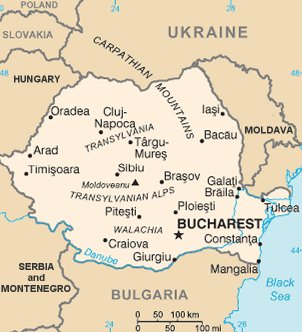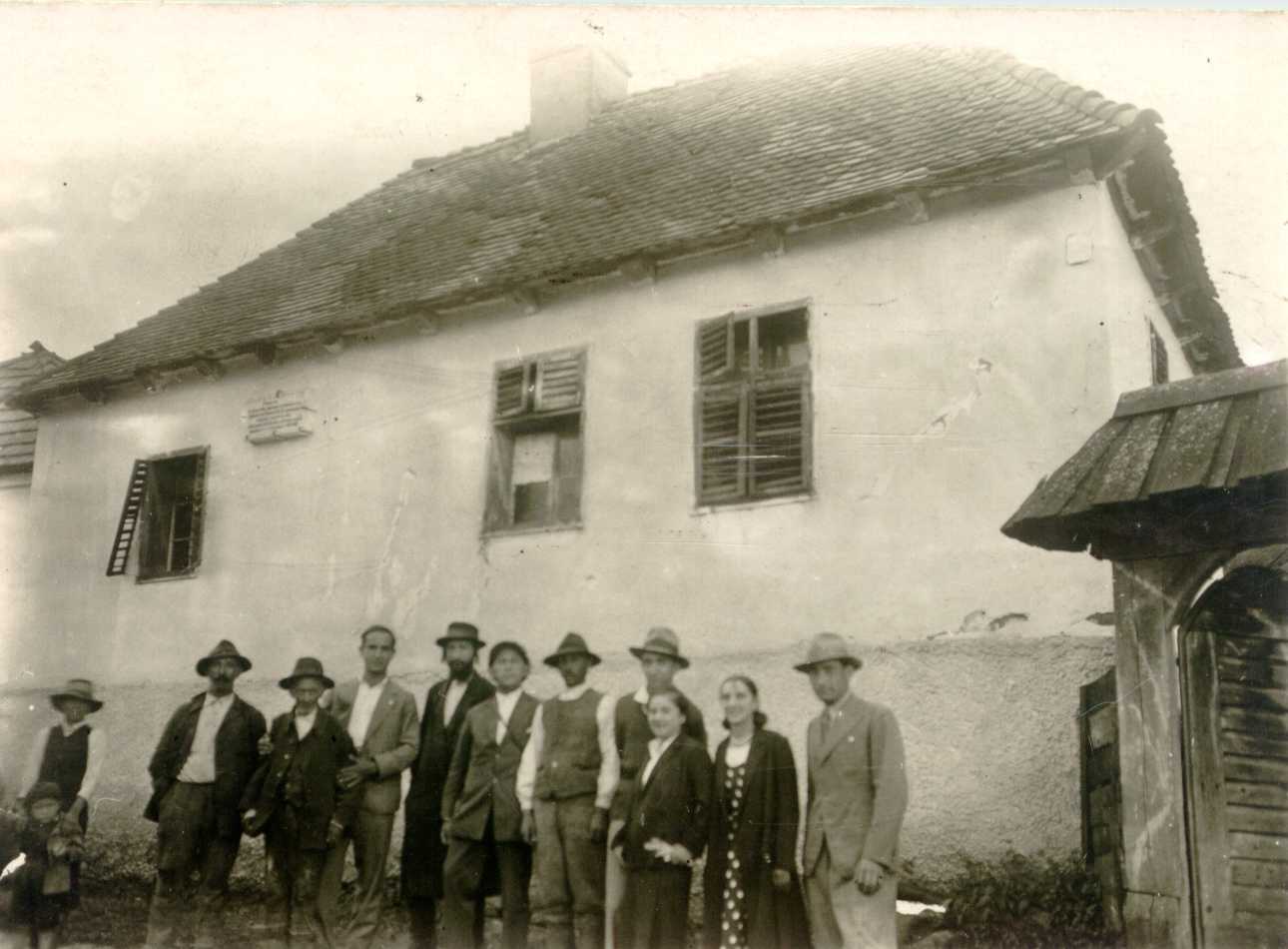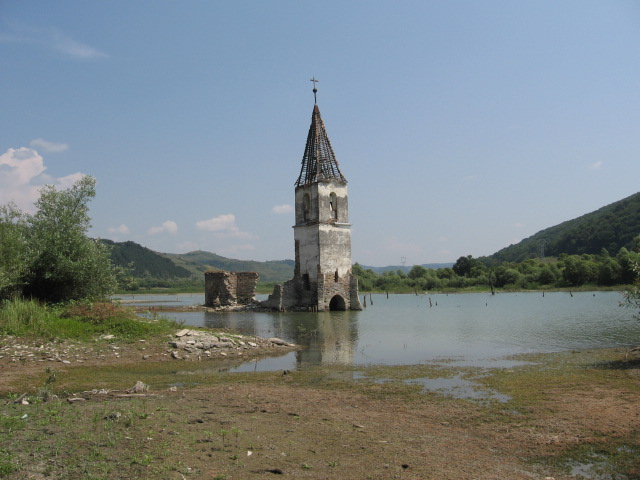
Peles Castle, in the mountains near Bucharest, the seat of the Romanian Royal Family. It was returned to the then-exiled Royal Family after the collapse of the Ceaușescu communist regime and is now a major tourist attraction.
Location and cultural history

Romania takes its name from the fact that it is a former Roman province - Dacia - and its language is a Romance (Latin-derived) language - unique in that region. It borders the Black Sea, where the Danube meets the sea after flowing through an astonishing 10 countries. Other neighbours are Moldova (formerly part of Romania), Hungary, Bulgaria, Ukraine, and Serbia. Much of the present country was under Ottoman control until the 19th century but there seems never to have been a serious attempt to establish Islam widely. Muslims have been present in the regions of Tulcea and Constanța on the Black Sea coast for 700 years, but they remain a small minority. The western province of Transylvania was formerly part of Hungary and has been disputed on and off ever since. The full history is far to complex to go into here. After World War 2 Romania became part of the Soviet sphere of influence, and Moldova was annexed by the USSR. After the fall of Communism Moldova became an independent country, and its ties with Romania are strong. Romania is now part of the EU.
The religious history is extraordinarily complex. The traditional religion of ethnic Romanians is the Orthodox branch of Christianity, and most Romanians belong to this. However Hungarians and their Austrian Habsburg monarchs were Catholic. They introduced the Eastern Rite of the Catholic Church to bring Romanians into the Catholic fold. Eastern Catholic rites and practices are close to Orthodox ones, and many Transylvanian Romanians made the switch. Now evey town of any size will have two rival Catholic churches - the Eastern Rite one with everything in Romanian, and the Roman Rite one with everything in Hungarian. As well as these, and the Orthodox church, there will be Lutheran and/or Calvinist Protestant churches worshipping in German or Hungarian respectively.
In addition you may also see a smaller Unitarian church. The Unitarian movement started in Transylvania (then officially part of Hungary, but a more or less autonomous principality) and also in the Polish Empire, in the 16th century. Unitarians do not accept the concept of the Trinity, maintaining that there is just one God. Jesus was the Messiah, but was human, not divine. A rational rather than literal approach is to be applied to understanding the Bible. The movement spread to England, where it was initially illegal. Sir Isaac Newton is generally believed to have been a closet Unitarian. Unitarianism was accepted in Transylvania and became one of the four permitted state religions along with the Catholic, Protestant and Orthodox churches. (Once religious freedom was allowed in England in the 18th century, Unitarianism became quite popular, suggesting it had long had an underground following. Manchester College at Oxford University is a Unitarian foundation.)
None of these denominations encourage circumcision, and the majority Orthodox church positively discourages it. So traditionally in Romania circumcision was confined to the small Jewish and Muslim minorities.
The Sabbatarians
In 1588 a breakaway group, mostly members of the (Hungarian) Székely ethnic group, split from the Unitarians under the leadership of Matthias Vehe, András Eössi and Simon Péchi. They became known as Sabbatarians because they celebrated the Sabbath on Saturday. Initially they still believed in Jesus as a non-divine messiah, but eventually they rejected the New Testament entirely, obeyed Jewish dietary laws and observed Jewish religious festivals. They did not circumcise, so they were Jews in all but name, circumcision and ethnicity. Eössi was a nobleman, Péchi a high official who became Chancellor of Transylvania, so they were influential people and by the early 17th century there were around 20,000 Sabbatarians in Transylvania.
Things turned bad for them on May 23, 1621 when Simon Péchi was dismissed from his post as Chancellor, and arrested, on political grounds. From then on Sabbatarians were persecuted, and eventually were given a deadline of Christmas Day 1635 to join one of the four permitted churches. In 1638 the arrests and trials began. Sabbatarians were arrested, tortured and imprisoned, and their writings banned. For more than 200 years the few remaining believers had to pretend to be Catholics or Unitarians and practise their religion in secret. The census results (below) suggests that most posed as Catholics, probably because their rejection by the Unitarians was still bitter.

A lifeline was thrown in 1868 to the few hundred remaining Sabbatarians, who were mostly in the town of Bezidu Nou (Bözödújfalu in Hungarian), in the district of Maros, the traditional centre of the Szekeler people. Dr Beck, the Bucharest Chief Rabbi, negotiated for the remaining followers to be permitted to join the Jewish community. Over the next few years the Sabbatarians were circumcised, often in mass ceremonies, and allowed to establish schools, as a branch of Judaism. The Jewish population of Bezidu Nou therefore jumped from just 8 people in in the 1850 census to 20% in the 1869 census, with a 10% drop in the Roman Catholic numbers and a 4% drop in Eastern Catholic numbers.
The Bezidu Nou synagogue, date unknown, and some of its congregation. From the Romanian Minorites blogspot - below.
Unfortunately, in World War 2, Romania sided with the Axis powers, and persecution of the Jews began. Initially Sabbatarians were regarded as exempt, since they were not ethnically Jewish. But by 1944 they were also herded into ghettos. The parish priest of Bezidu Nou pleaded for them with the local SS Commandant, on the grounds that they were not of the Jewish race. He saved some, but not all, since there had been a lot of inter-marriage in the preceding 70 years. The remainder were sent to Auschwitz, along with the ethnic Jews. Many of those who survived emigrated to Israel post-war, and since the census in Communist times did not record religion, the number who remained is unknown. There seems to be no trace of practicing Sabbatarians in Romania today.
Bezidu Nou was largely flooded by a water-supply dam in 1988. The inhabitants were rehoused elsewhere but a small population, mostly Romany (gypsies) remains in the area.

Bezidu Nou today from the Romanian Minorites blogspot - below.
Acknowledgements
Our Hungarian correspondent András Jóvágásúfiú brought the Sabbatarians to our attention and suggested this page. The major sources were:The Romanian Minorities blogspot (Bi-lingual - if you don't read Romanian scroll down to the English section.)
Wikipedia SzeklerSabbatarians


